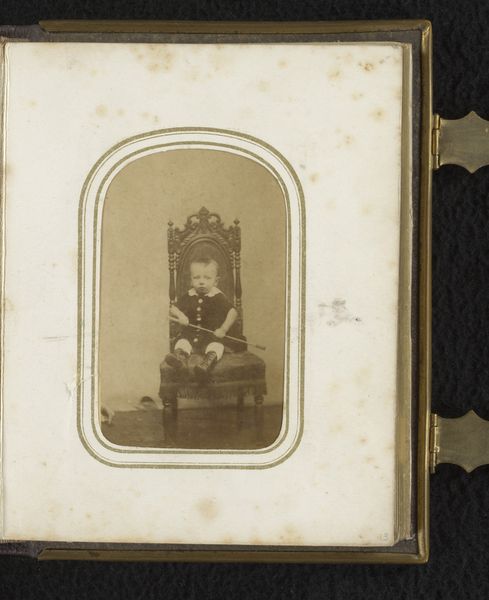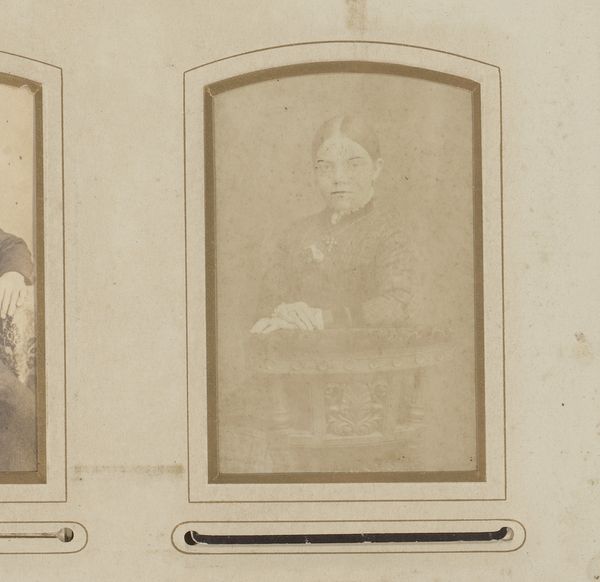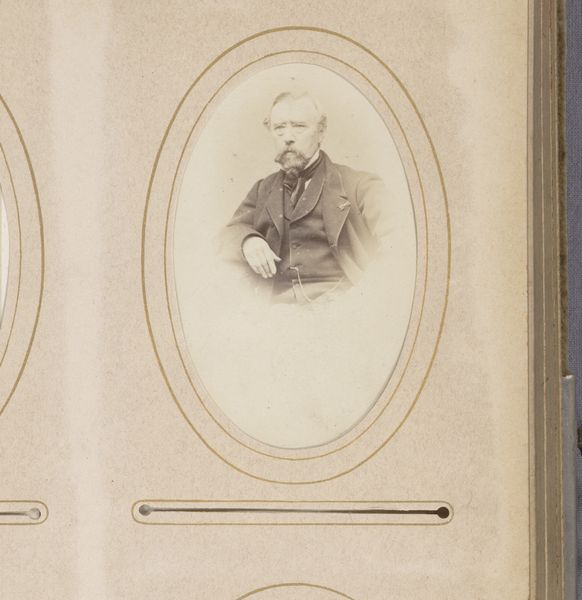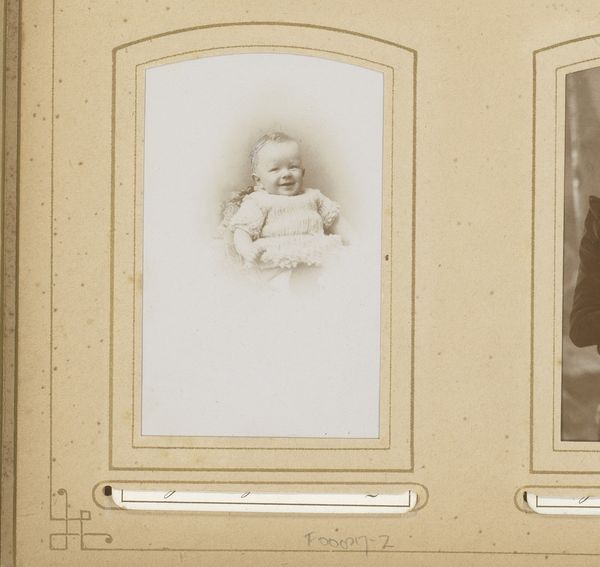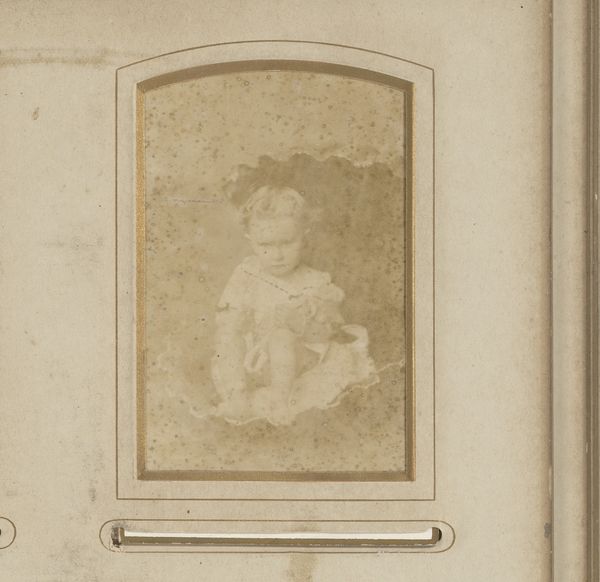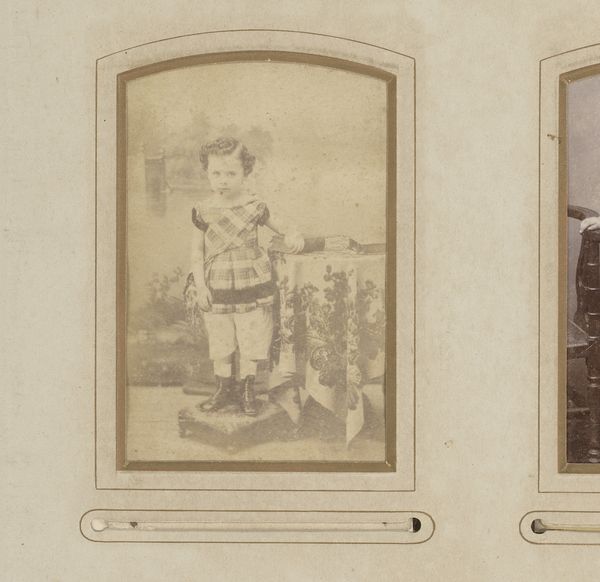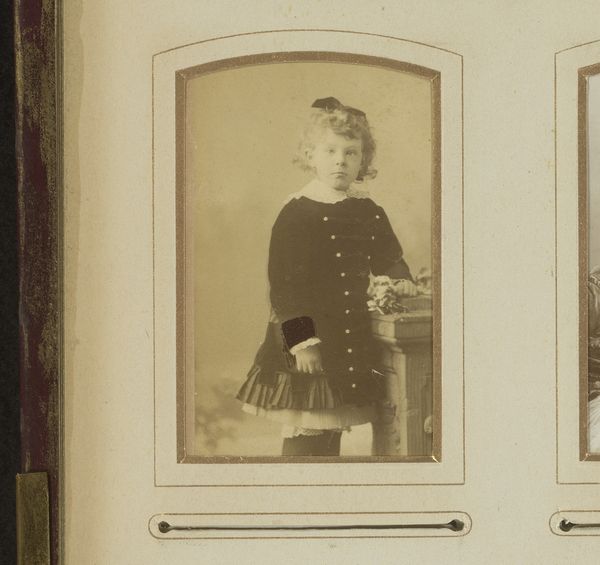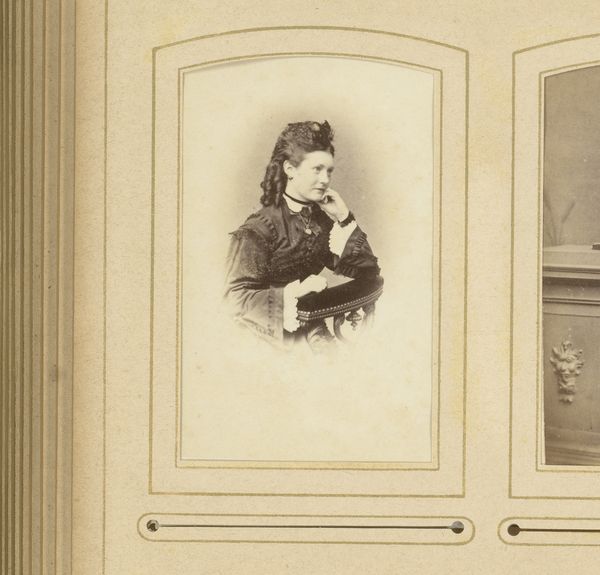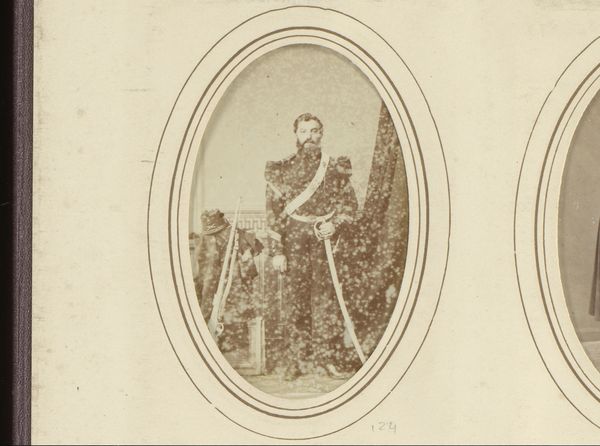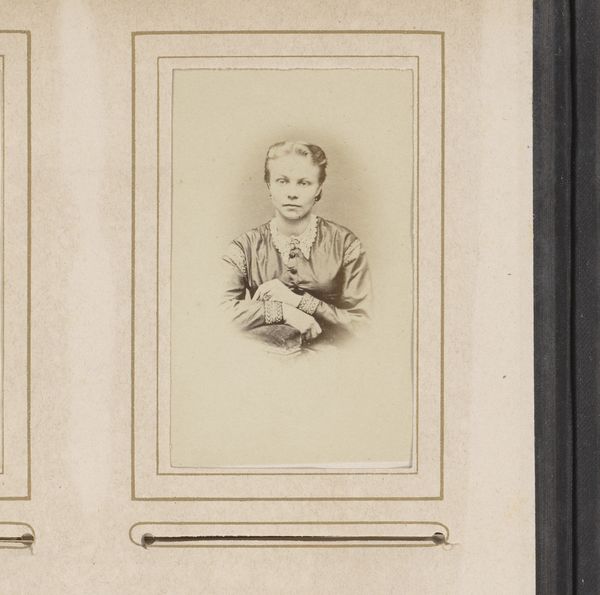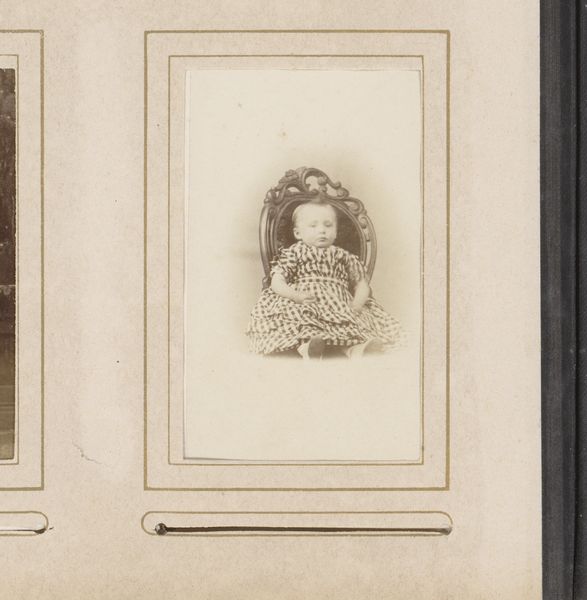
photography, gelatin-silver-print
#
portrait
#
photography
#
child
#
gelatin-silver-print
#
19th century
#
genre-painting
#
realism
Dimensions: height 83 mm, width 50 mm
Copyright: Rijks Museum: Open Domain
Curator: This is a gelatin silver print dating from between 1861 and 1874, "Portret van een kind, zittend op een stoel" ("Portrait of a child, sitting on a chair"). It’s currently held in the Rijksmuseum. Editor: Wow, that kid looks like they’re ready to rule the world, perched on that fancy chair! The expression is just priceless. There's something so innocent and imperious at the same time, you know? Like, "I’m adorable, but don’t you dare forget my royal status!" Curator: It is interesting how studios posed children with props to infer status during the 19th century. These types of photographic portraits allowed for broader representation than paintings. Note the elaborate, ornamented chair; it gives the child an air of importance, fitting into the tradition of stately portraiture while allowing accessibility. Editor: Totally! And you can almost feel the photographer trying to capture this fleeting moment of childhood. The slightly blurred edges and the sepia tone give it such a dreamy quality. But look at those tiny shoes barely peeking out from under the skirt—total rebellion! What do you make of the child's gesture, that slight lift of the right arm? Curator: It probably served to animate what was, inevitably, a rather static, constructed pose. Think about the historical context: photography was newer and subjects, especially children, needed direction. Movement helped make the subject more relaxed under those circumstances, but you can sense the constructed image struggling to become genuine. Editor: Makes me think about my own childhood pictures. So stiff and posed. No one looked natural, though we thought we did! Curator: Right! Early photography adopted conventions from painting, striving to present a refined image. And these were meant for specific viewers and to represent families in a certain way to broader society. Editor: Which makes you wonder about who got to see these, right? And what this family's social circles must have been like. Art that opens up those questions is the best kind. Curator: It truly is. These early photographic images reveal so much about how individuals and families wished to present themselves during a period of rapid social and technological change. Editor: And it also shows how little children have changed in wanting to make mischief regardless of circumstances. I see pure character here.
Comments
No comments
Be the first to comment and join the conversation on the ultimate creative platform.
